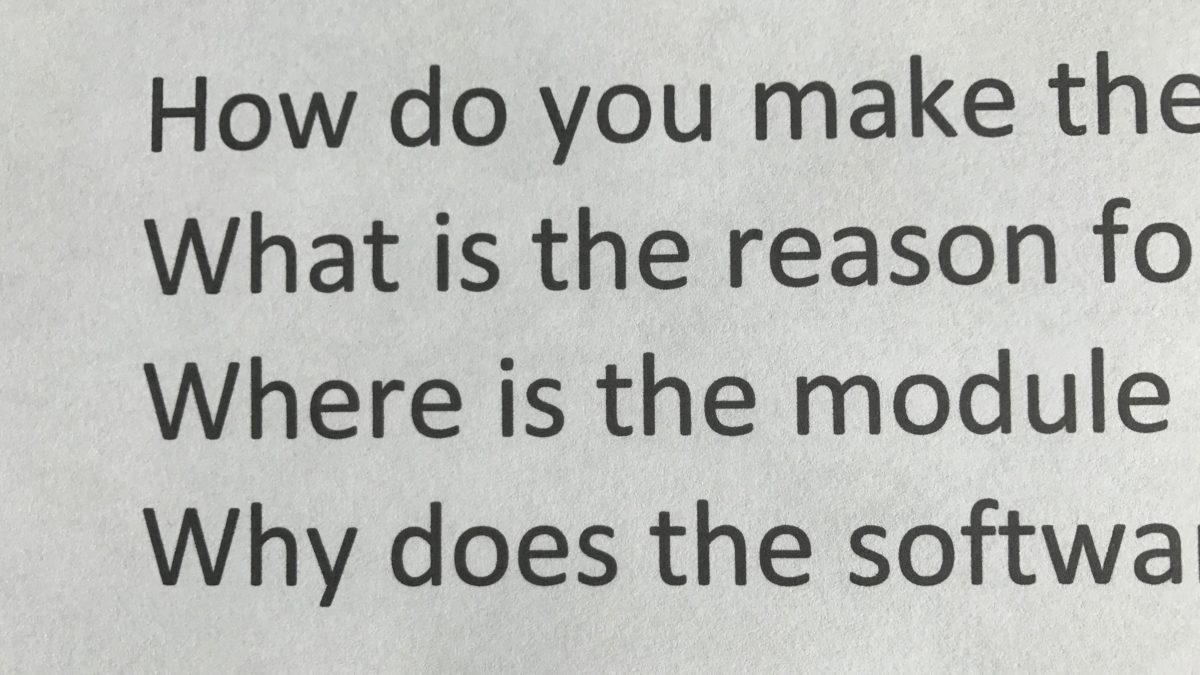- Contact Bob Goodyear at
- (404) 790-5855
- Bob@aGeekWhoSpeaks.com

Video Rehearsal Improves Your Presentation
December 12, 2017
Storytelling Brings Along a Point
March 1, 2018Have a Planned Question for Your Silent Q&A

Have you ever asked, “Do you have any questions” during your presentation and gotten no response from the audience? How did that feel? How long did you wait before moving on? One solution is to have your own planned question.
As a technical presenter, it is expected to have a Q&A period during your presentation. However, having no one raise their hand to ask a question is one of the most uncomfortable feelings I’ve ever experienced in my years of presenting. I tried all kinds of methods to handle this. I would laugh it off many times with a comment like “I guess I did a great job of explaining everything to all of you” or “I must have all of you so confused that you can’t even figure out a question to ask”. I’ve even prodded the audience by saying something like “Surely you must have some questions”. Those lines made me feel better but I could tell that my audience didn’t find them very amusing.
This was also happening at the most inopportune time, which was at the end of my presentations. Something had to change. I turned to a very seasoned presentation coach to get some answers. He gave me 3 pieces of advice.
Move the Q&A
The first thing he taught me to do was to move my Q&A up in my presentation and not have it at the end. I’ve written about how and where to move the Q&A before in a previous blog post.
Change your Q&A opening
His second suggestion was to change how I opened the Q&A. Instead of simply asking “Do you have any questions”, he suggested opening with a statement like “Before I close, what questions do you have about what we have talked about”. His point was that this sets the expectation for you to have the last words. It reduces the burden on the audience to manufacture a question just so the presentation won’t end with silence.
How to handle the silence
The third piece of advice he gave me is what has changed how my silent Q&A sessions have gone. He told me that while I might think that silence means the audience doesn’t care, it might mean that they may not know where to begin with questions. His suggestion was for me to have a planned question that I give to the audience and then answer it. It would go something like this “Let me share with you one common question that I’ve had before…”, or “Several times I’ve been asked about…”
I make sure before I start my presentation that I have a question or two in mind that I can use in case of silence. When I’ve used this technique, I’ve found that answering my own question has prompted the audience to then ask questions. Some of my liveliest Q&A sessions have started out this way.
While it might sound weird, answering your own planned question in the beginning of your Q&A is quite helpful. You might even start off all of your Q&As by answering your own question and then opening it up to the audience. Try this technique to increase your Q&A effectiveness.
